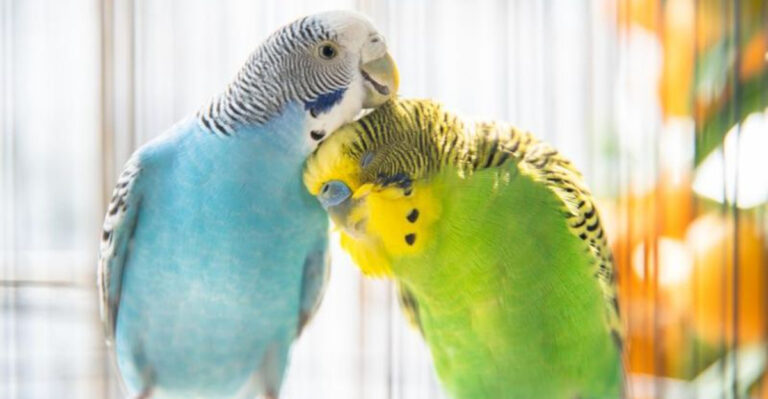What You Can Do To Ease Your Cat’s Anxiety
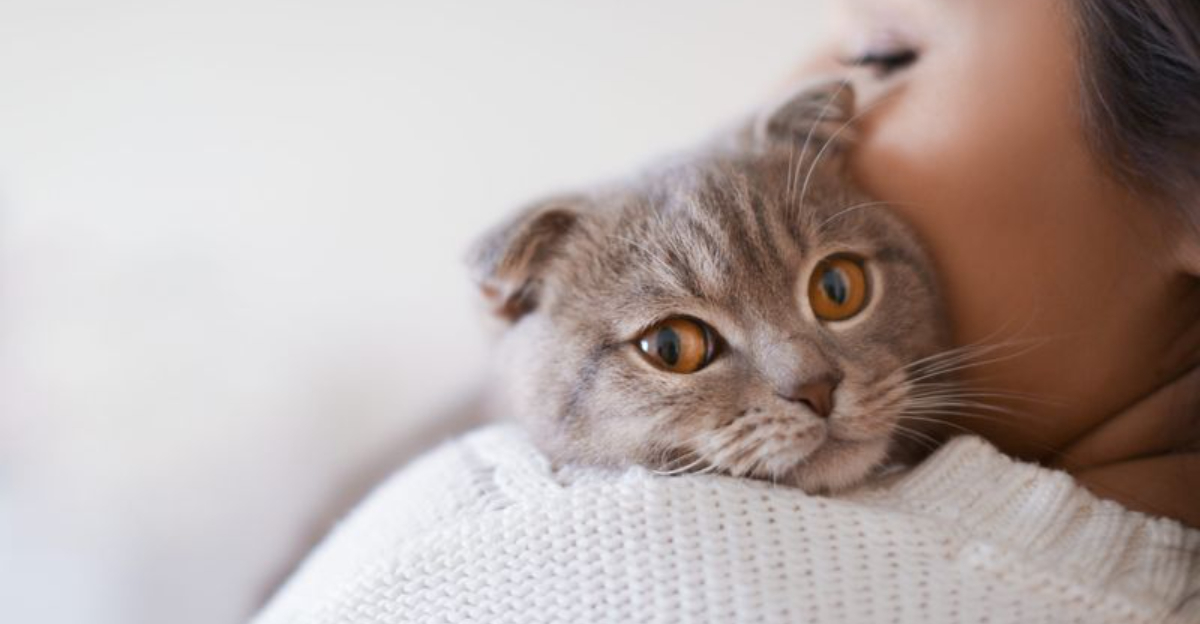
Cats might seem cool and collected, but they experience anxiety just like we do. When your furry friend starts hiding more than usual, grooming excessively, or acting out in ways that aren’t typical, they might be feeling stressed.
Understanding how to help your anxious cat can strengthen your bond and improve their quality of life dramatically.
1. Create A Cozy Safe Space
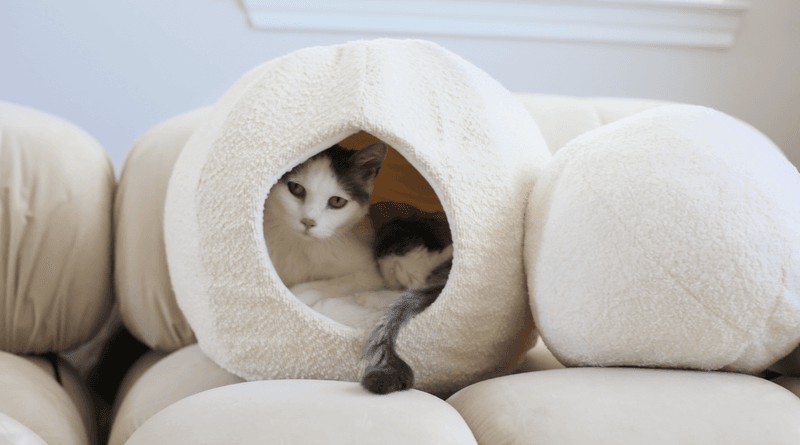
Every cat needs their own special retreat where they can escape when feeling overwhelmed. Set up a quiet corner with a soft bed, familiar blanket, and maybe their favorite toy.
Make sure this hideaway is in a low-traffic area of your home where your cat won’t be disturbed by sudden noises or movements. Some cats prefer elevated spaces like cat trees or shelves where they can observe their surroundings from a safe distance.
The key is consistency – once you’ve created this safe zone, don’t rearrange it frequently as cats find comfort in familiar environments.
2. Maintain A Consistent Routine
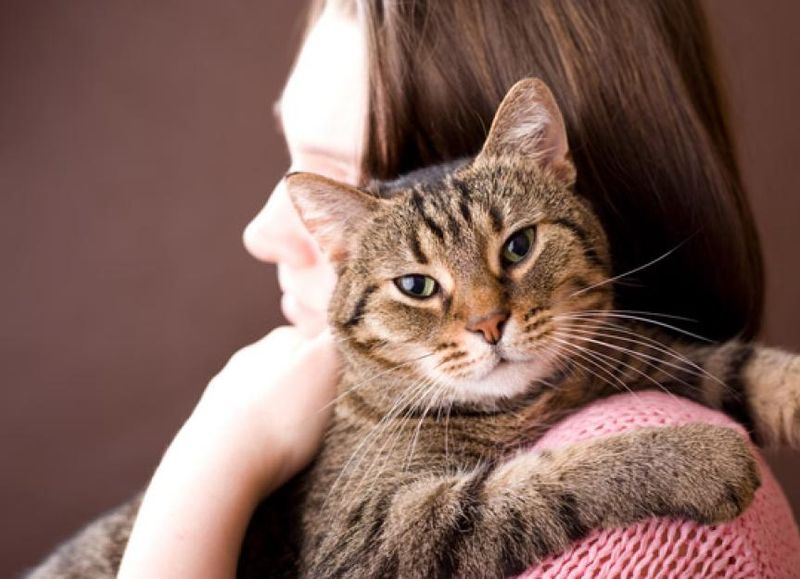
Cats thrive on predictability, and a stable daily schedule can significantly reduce their stress levels. Try to feed, play with, and clean their litter box at roughly the same times each day. Even small disruptions like moving furniture or having guests over can trigger anxiety in sensitive cats.
When changes are necessary, introduce them gradually while maintaining as much of the normal routine as possible.
During unavoidable schedule changes like vacations or moves, keep some elements consistent – their favorite bed, toys, or feeding dishes can provide reassuring familiarity.
3. Use Calming Pheromone Products
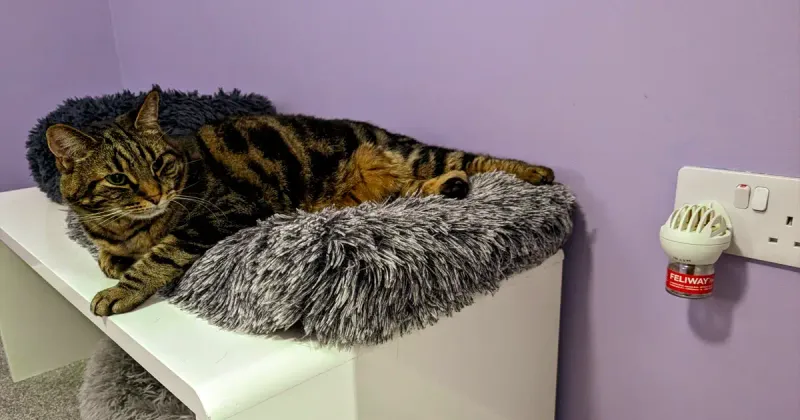
Synthetic feline pheromones mimic the natural calming chemicals cats produce when they’re feeling safe and content. Available as diffusers, sprays, or collars, these products send silent comfort signals to your anxious kitty.
Feliway is a popular brand that replicates the facial pheromones cats deposit when they rub their cheeks against objects – their way of marking safe territory. Place diffusers in areas where your cat spends most time or shows anxiety behaviors.
For travel or vet visits, spray pheromones on a blanket inside their carrier about 15 minutes before departure to help create a sense of security.
4. Play Therapy Sessions
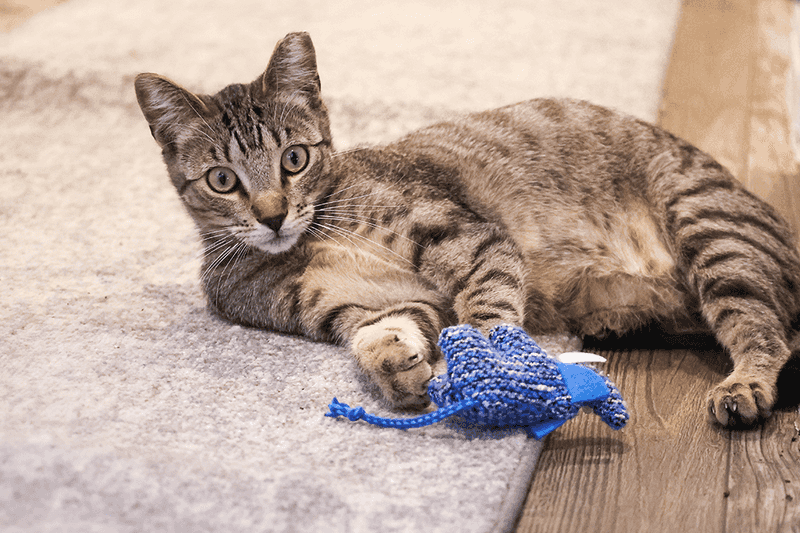
Regular interactive play sessions do more than just exercise your cat – they’re powerful anxiety-busters! Wand toys that mimic prey movements can trigger your cat’s natural hunting instincts, releasing pent-up energy and stress.
Aim for at least two 10-15 minute play sessions daily, especially before mealtimes. This mimics their natural hunt-eat-groom-sleep cycle and helps reduce anxiety-related behaviors like excessive grooming or aggression.
End each session with a treat or meal to complete the hunting sequence. Some cats even benefit from puzzle feeders that engage their minds while providing a tasty reward.
5. Try Calming Music Or White Noise

Sound therapy can work wonders for anxious cats! Special music composed specifically for feline ears – with frequencies and tempos that cats find soothing – is available on streaming platforms. These calming tunes can mask startling household or outdoor noises.
White noise machines or even a quietly running fan can create a consistent sound backdrop that blocks sudden noises that might trigger anxiety. Many cat owners report success with nature sounds like gentle rainfall or soft bird chirping.
Start with low volume and observe your cat’s reaction, gradually finding the sweet spot that helps them relax without adding to their stress.
6. Provide Vertical Territory
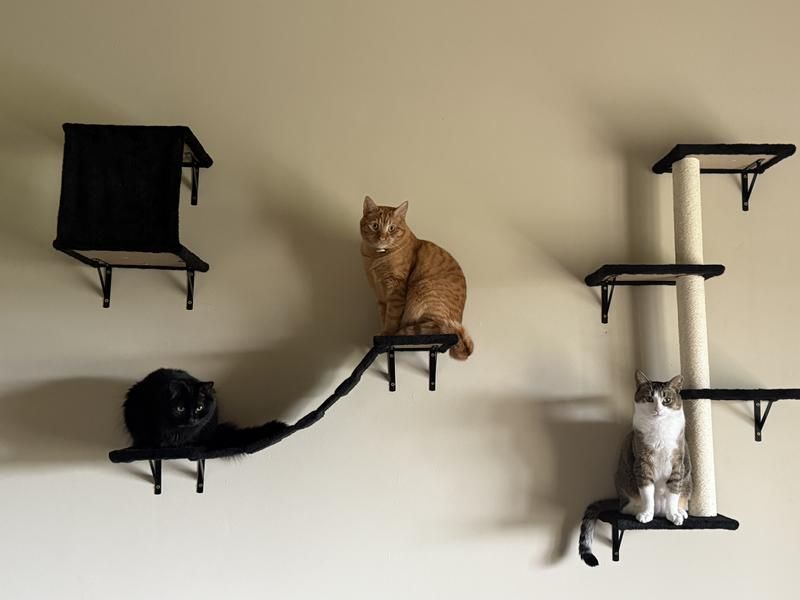
Cats feel safest when they can survey their surroundings from above. Cat trees, wall shelves, or window perches give your anxious kitty escape routes and vantage points that boost their confidence.
Strategic placement matters – position these vertical spaces near windows for enriching outdoor views but away from noisy appliances or high-traffic areas.
Make sure pathways between vertical spaces allow your cat to move around the room without touching the floor.
For multi-cat households, having multiple vertical options prevents resource guarding and gives each cat their own territory, significantly reducing anxiety from social tension.
7. Consider Natural Calming Supplements

Several vet-approved natural supplements can help take the edge off your cat’s anxiety. L-theanine (found in green tea), tryptophan (the turkey dinner sleep inducer), and certain B vitamins support calm brain chemistry without sedating your cat.
Herbs like valerian and chamomile are available in cat-specific formulations that may help mild anxiety. Always choose products specifically formulated for cats, as human supplements may contain harmful ingredients or incorrect dosages.
Before starting any supplement, consult your veterinarian – especially if your cat takes other medications or has health conditions. The right supplement can make a noticeable difference in just a few weeks.
8. Master The Art Of Cat Massage

Gentle touch therapy can help anxious cats release tension and form stronger bonds with their humans. Start with short sessions when your cat is already relaxed, perhaps while they’re resting on your lap. Most cats enjoy slow strokes along the cheeks, between the eyes, or under the chin.
Watch for signs of enjoyment like purring or kneading, and stop immediately if your cat seems uncomfortable.
For particularly anxious cats, try TTouch therapy – a circular motion with your fingertips that gently moves the skin. This specialized technique can be especially effective for cats who’ve experienced trauma or have chronic anxiety.
9. Minimize Threatening Odors

A cat’s sense of smell is approximately 14 times stronger than ours, making them extremely sensitive to odors we might not even notice. Strong cleaning products, scented candles, or essential oils can trigger anxiety in sensitive cats.
Choose unscented, pet-safe cleaning products and avoid air fresheners in areas where your cat spends time. Be mindful of bringing in scents from outside – other animals’ odors on your clothing can make your cat feel that their territory is threatened.
If visitors bring pets, wash your hands before interacting with your cat to avoid transferring unfamiliar and potentially threatening scents.
10. Try Anxiety Wraps Or Vests
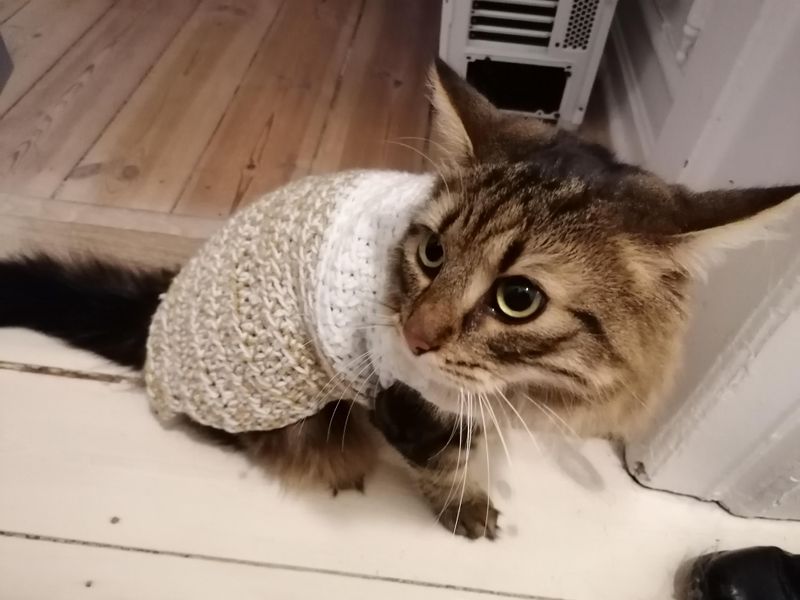
Pressure therapy works for many anxious cats just as it does for humans. Specially designed cat anxiety vests apply gentle, constant pressure that mimics the feeling of being held, triggering a calming response in your cat’s nervous system.
The ThunderShirt is a popular brand that wraps around your cat’s torso without restricting movement. For maximum effectiveness, introduce the vest during calm times first, using treats and positive associations before using it during stressful situations.
Some cats may initially freeze when wearing the vest – this isn’t necessarily distress but rather a normal adjustment period. Most cats adapt within a few wearings.
11. Monitor And Reduce Stressful Interactions
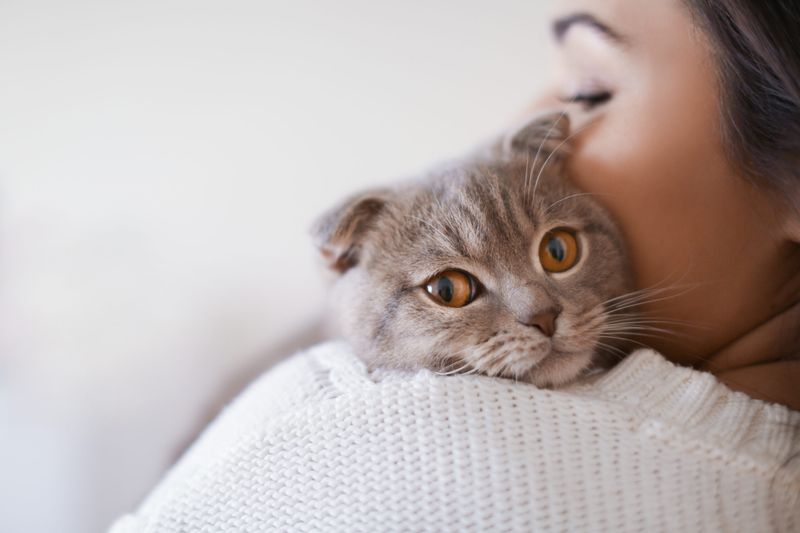
Pay close attention to what triggers your cat’s anxiety. Common culprits include loud visitors, rowdy children, or conflicts with other pets. Keep a simple journal noting when your cat shows signs of stress to identify patterns.
Once you’ve identified triggers, create management strategies. This might mean providing escape routes before visitors arrive or establishing separate territories for pets who don’t get along.
For unavoidable stressors like construction noise or moves, consider temporarily relocating your cat to a quieter room with all their essentials. Small environmental adjustments can make a huge difference in your cat’s stress levels.
12. Explore Appropriate Scratching Outlets
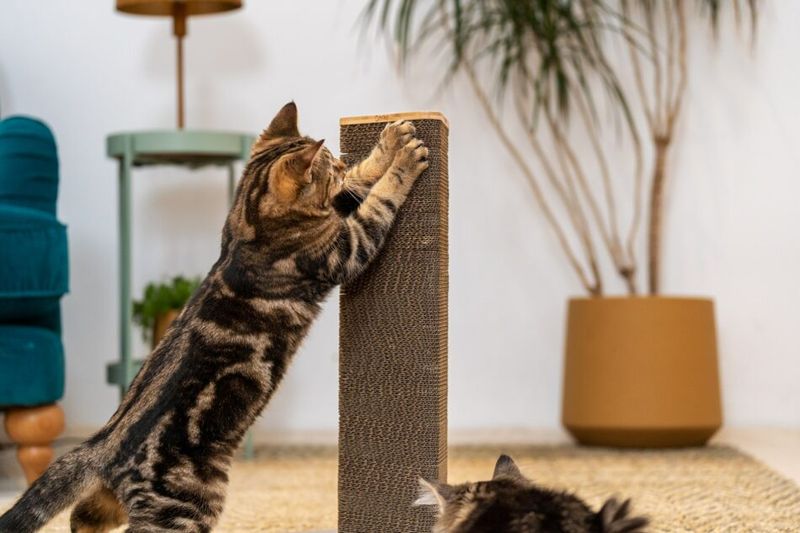
Scratching isn’t just about nail maintenance – it’s a major stress reliever for cats! Providing multiple appropriate scratching surfaces can significantly reduce anxiety-related behaviors like inappropriate scratching or aggression.
Offer variety – some cats prefer horizontal scratchers while others like vertical posts. Experiment with different materials too: sisal rope, cardboard, or carpet-covered surfaces appeal to different cats.
Place scratchers near sleeping areas and in social spaces where your cat spends time. Adding catnip or silvervine to new scratchers can entice reluctant cats to use them, giving them a healthy outlet for stress relief.
13. Consult With A Veterinarian
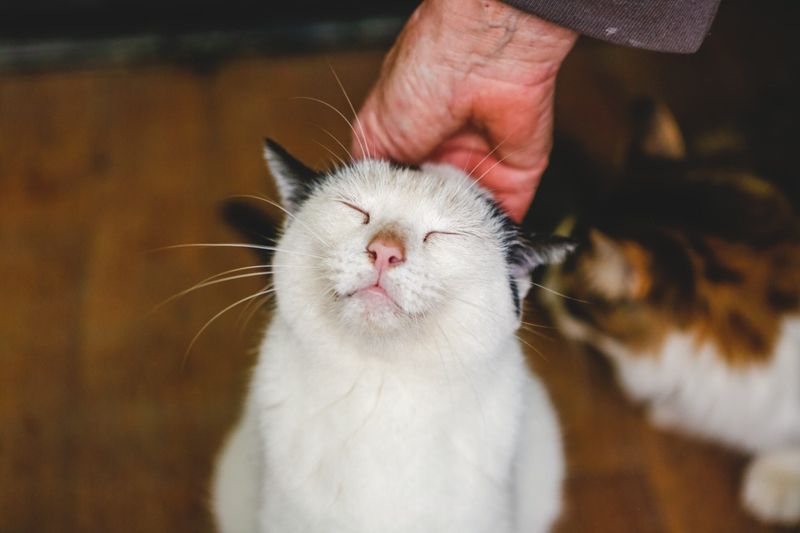
Sometimes anxiety stems from underlying medical issues that cause discomfort or pain. Conditions like hyperthyroidism, urinary tract problems, or arthritis can manifest as behavioral changes that resemble anxiety.
Schedule a thorough checkup if your cat’s anxiety seems sudden or severe. Your vet can rule out medical causes and might recommend prescription medications for cats with severe anxiety that doesn’t respond to environmental changes.
For chronic cases, your vet might refer you to a veterinary behaviorist who specializes in complex anxiety disorders.
These specialists can develop comprehensive treatment plans combining medication, behavior modification, and environmental management.




